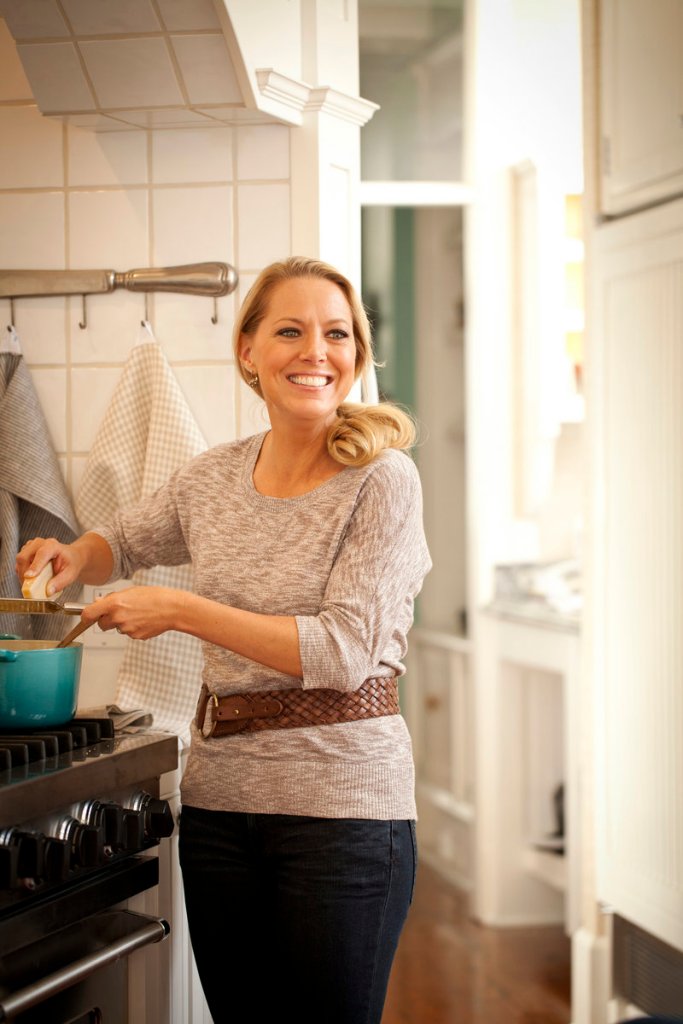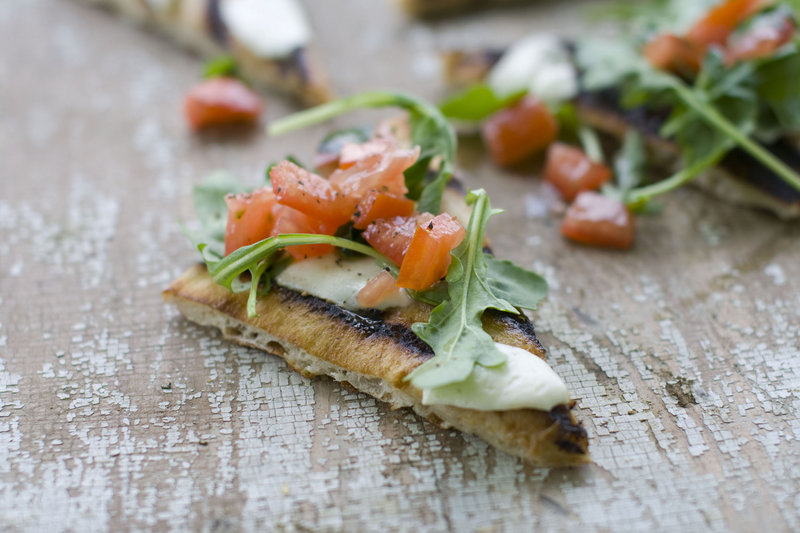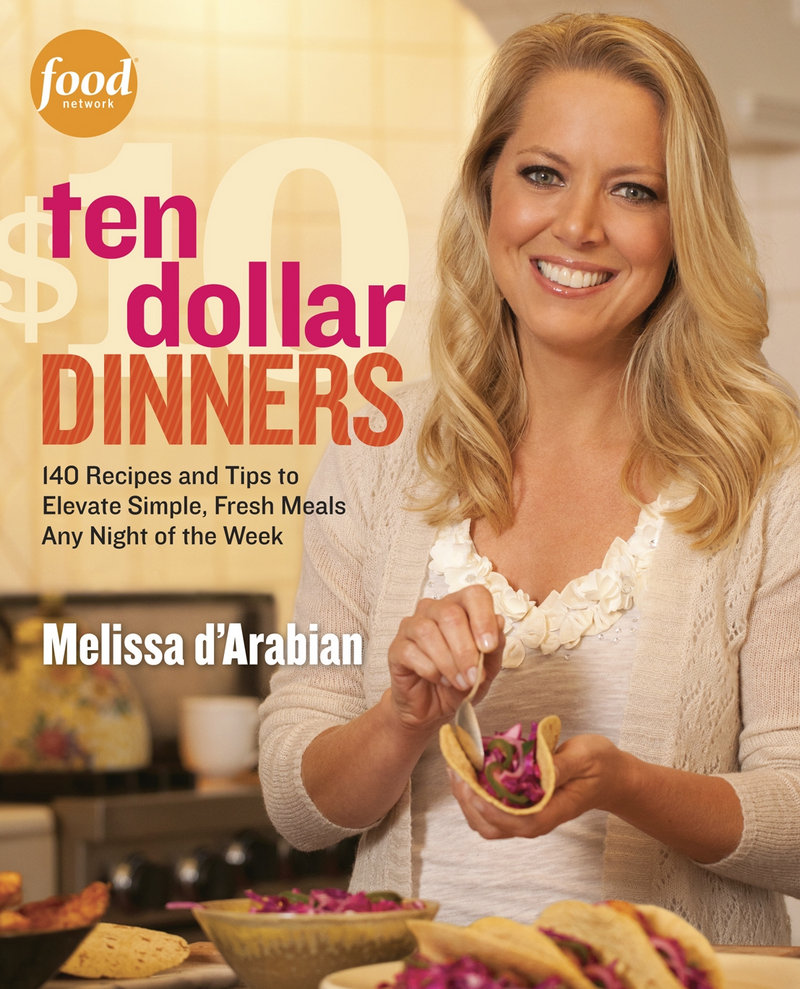Melissa d’Arabian is a home economist for a new era. Actually, she’s more CFO than home ec.
That’s because the Food Network host is as adept at balancing ledger sheets as she is at getting dinner on the table. It’s a handy skill that comes with being a trained financial strategist, and turned out to be an unlikely backbone for her culinary career. Her basic message to thrifty home cooks? Stretch your food dollars by treating your kitchen in terms of profit and loss.
“As the manager of a household you’re actually running a fairly complicated business,” she says. “There are simple lessons we can take from the business world and apply to our own homes.”
Before hosting Food Network’s “Ten Dollar Dinners,” d’Arabian was a financial services consultant, then a high-powered financial executive for The Walt Disney Company. Some of the same principles she applied to keeping her employers in the black are the same ones she uses today to prepare healthy, cost-effective meals for her family.
Keeping a home kitchen in the black is a matter of considering five financial concepts, she says.
• PROCUREMENT
In the business world, procurement is about obtaining goods. In the home kitchen, that means groceries. Most people understand that you can save money by buying what’s on sale, d’Arabian says. But to really make the most of your dollars, think like a retailer. Each week, she says, grocery stores offer certain meats as “loss leaders,” products discounted by as much as 50 percent just to get customers through the door.
“The way to know loss leaders is to grab the flier at beginning and see what’s on the front cover,” she says. “If you’re smart, you don’t just buy one, you buy two or three.”
• FORECASTING
Successful businesses project what their upcoming costs and revenues will be. A “rapid review” of a month’s worth of grocery receipts will give the home cook a rough idea of what’s being spent, d’Arabian says.
Once you have that number, figure out how much you’d like to save per month — say $100 — then do some quick menu planning. “Open the cupboard, the freezer, the fridge, glance around and see what needs to be used up,” she says. Then buy only what you need to fill out the meals already lurking in your pantry. Just being aware, she says, will automatically reduce your spending.
• MARKETING
Seriously? You have to promote dinner to your kids?
“You don’t have to, but you’ll be a lot more successful if you do,” d’Arabian says. In the d’Arabian household, a different child “presents” the meal each night, explaining each dish in detail – what’s in it, where it comes from, how it’s made. “The simple act of presenting the food takes the mystery out of it for picky eaters, celebrates what we’ve spent and markets it to my family,” she says.
• INVENTORY MANAGEMENT
Check your refrigerator once a week to see what needs to be used up, d’Arabian says, then apply some creative recipes. Wilting carrots? Make her creamy any-veggie soup. Lots of vegetables on the edge? Try d’Arabian’s crisper drawer pasta or a “kitchen sink” soup. “The most expensive ingredient is the one you throw away,” she says.
• POM (otherwise known as Production Operation Management)
Simply put, understand the logistics of your household. Don’t plan to do braised short ribs on soccer and ballet night. Always have a couple of recipes up your sleeve that are minutes from fridge to table. Otherwise, like a company that hasn’t planned well, you may find yourself paying extra to deliver the goods.
“When you panic at the last moment, that’s when you order in Chinese,” she says. “When you do that, you’re paying for that expedited shipping.”
TOMATO SALAD-TOPPED GRILLED PIZZA
Start to finish: 45 minutes
Servings: 4
1 tablespoon olive oil, plus extra for dough
1-pound bag prepared pizza dough
1 large very ripe tomato, cored and chopped (or 1 cups halved cherry tomatoes)
1 tablespoon balsamic vinegar
1 teaspoon lemon juice
teaspoon kosher salt
6 fresh basil leaves, roughly torn
4 ounces fresh mozzarella cheese, thinly sliced and quartered
2 cups arugula or other baby greens
Rub a bit of olive oil onto a cutting board, then place the pizza dough on it, turning to coat it lightly on all sides with the oil. Cover with a kitchen towel and let rest for 30 minutes.
After the dough has rested, heat one side of a grill to medium-high and the other side to medium-low.
In a medium bowl, combine the tomato, balsamic vinegar, lemon juice, salt, basil and the 1 tablespoon of olive oil. Toss well, then set aside.
Using a rolling pin, roll out the dough into a circle about 14 inches across. Use the cutting board to carry the dough out to the grill. Place the dough on the hot side of the grill and grill until the bottom is browned and has grill marks, about 1 to 2 minutes. Use a spatula to flip the dough and move it to the cooler side of the grill.
Top the pizza with the mozzarella, then cover the grill and cook until the cheese is melted, about 2 to 3 minutes.
Use the spatula to transfer the pizza back to the cutting board. Cut the pizza into slices, then top evenly with the arugula. Using a slotted spoon, top the pizza with the tomatoes.
Per serving: 390 calories; 160 calories from fat (41 percent of total calories); 18 g fat (5 g saturated; 0 g trans fats); 25 mg cholesterol; 51 g carbohydrate; 13 g protein; 2 g fiber; 520 mg sodium.
(Recipe from Melissa d’Arabian’s “Ten Dollar Dinners,” Clarkson Potter, 2012)
Send questions/comments to the editors.





Success. Please wait for the page to reload. If the page does not reload within 5 seconds, please refresh the page.
Enter your email and password to access comments.
Hi, to comment on stories you must . This profile is in addition to your subscription and website login.
Already have a commenting profile? .
Invalid username/password.
Please check your email to confirm and complete your registration.
Only subscribers are eligible to post comments. Please subscribe or login first for digital access. Here’s why.
Use the form below to reset your password. When you've submitted your account email, we will send an email with a reset code.